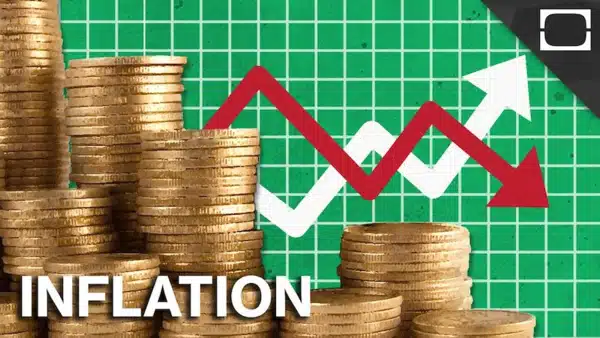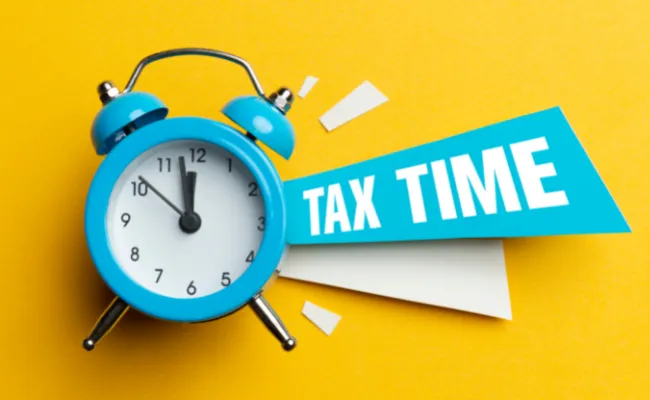The recent news of U.S. inflation surging to 7.5% has sent shockwaves through the economy, prompting concerns and discussions about its implications for consumers, businesses, and policymakers alike. Rajkotupdates.News provides valuable insights into this significant development, shedding light on the factors contributing to the spike and its potential repercussions. In this comprehensive analysis, we’ll delve into the ramifications of such a drastic inflationary surge and explore what it means for individuals, industries, and the broader economy.
Understanding the Numbers
U.S. inflation reaching 7.5% marks a significant escalation from previous levels and represents the highest rate recorded in four decades. This sharp increase has been fueled by a variety of factors, including supply chain disruptions, rising energy costs, labor shortages, and increased demand as the economy rebounds from the pandemic-induced downturn.
Impact on Consumers
For consumers, the surge in inflation translates into higher prices for goods and services across the board. From groceries and gasoline to housing and healthcare, the cost of living is on the rise, putting a strain on household budgets and eroding purchasing power. This can have profound implications for families, particularly those on fixed incomes or with limited financial resources, who may struggle to afford essential items and maintain their standard of living.
Challenges for Businesses
Businesses are also feeling the heat of inflationary pressures, grappling with rising input costs, supply chain disruptions, and wage pressures. Many companies are faced with difficult decisions regarding pricing strategies, supply chain management, and workforce management as they navigate this challenging economic landscape. Small businesses, in particular, may find it challenging to pass on increased costs to consumers while remaining competitive in the market.
Policy Response
In response to the surge in inflation, policymakers are closely monitoring the situation and considering appropriate measures to address the underlying causes. The Federal Reserve, which has a dual mandate to promote price stability and maximum employment, may adjust its monetary policy stance in an effort to curb inflationary pressures. This could include raising interest rates, tapering asset purchases, or implementing other measures to tighten monetary conditions and rein in inflation.
Long-Term Implications
The long-term implications of sustained high inflation are complex and multifaceted. While moderate inflation can be conducive to economic growth and investment, excessively high inflation can have detrimental effects, such as eroding savings, distorting investment decisions, and undermining consumer confidence. Moreover, persistent inflationary pressures may necessitate more aggressive policy responses, potentially leading to increased volatility in financial markets and economic uncertainty.
Historical Context
A 7.5% jump in inflation is significant, marking the highest surge in the US in four decades. This level of inflation has not been seen since the early 1980s.
Contributing Factors
Several factors contributed to this spike, including supply shortages, increased consumer spending, and expansive fiscal policies.
Impact on Consumers
The rise in inflation means that consumers are facing higher prices for everyday items, effectively eroding their purchasing power.
Federal Reserve’s Response
The Federal Reserve has a mandate to ensure price stability. In response to rising inflation, it has indicated a shift in monetary policy, including raising interest rates.
Global Implications
US inflation has global repercussions. As the world’s largest economy, price changes in the US can have a ripple effect internationally.
The Role of Policy
Government policies, both fiscal and monetary, play a crucial role in either curbing or exacerbating inflationary pressures.
Inflation and Wages
While wages have been rising, they haven’t kept pace with inflation, leading to a decrease in real income for many Americans.
Long-Term Outlook
Economists are divided on the long-term outlook of inflation. Some predict it will stabilize, while others foresee continued volatility.
Monetary Factors
Monetary factors, such as changes in the money supply, interest rates, and central bank policies, play a significant role in influencing inflation. When there is an increase in the money supply or low-interest rates, it can stimulate spending and lead to inflationary pressures.
Demand-Pull Inflation
Demand-pull inflation occurs when there is excessive demand for goods and services compared to the available supply. Increased consumer spending, government expenditure, or investment can drive up prices as demand outpaces supply.

Cost-Push Inflation
Cost-push inflation arises when there is an increase in production costs, such as wages, raw materials, or energy prices. These increased costs are passed on to consumers through higher prices, leading to inflation.
Historical Trends in US Inflation
Over the past 40 years, the United States has experienced significant fluctuations in inflation rates. From 1980 to 2020, US inflation increased by approximately 7.5% on average.
Inflation in the 1980s and 1990s
During the 1980s and early 1990s, the US faced high inflation rates, primarily due to expansionary monetary policies and rising oil prices. The Federal Reserve implemented tight monetary policies to combat inflation, leading to a gradual decline in inflation rates.
Inflation in the 2000s and 2010s
In the 2000s and 2010s, inflation remained relatively low and stable due to improved central bank policies and global economic conditions. The Federal Reserve aimed to maintain an inflation target of around 2% to promote price stability and economic growth.
Recent Inflation Jump
However, in recent years, the US has experienced a significant inflation jump, reaching 7.5% over the past 40 years. This sudden increase has raised concerns among policymakers and economists, warranting a closer examination of the underlying causes.

Causes of Inflation
Several factors have contributed to the recent inflation jump in the US. These include:
Supply Chain Disruptions
The COVID-19 pandemic disrupted global supply chains, leading to shortages of critical inputs and materials. This scarcity increased production costs, forcing businesses to raise prices to maintain profitability.
Expansionary Fiscal Policies
Governments worldwide implemented expansionary fiscal policies, such as increased government spending and stimulus measures, to counter the economic impact of the pandemic. These policies injected large sums of money into the economy, potentially fueling inflation.
Increased Demand for Goods and Services
As the economy recovers from the pandemic, there has been a surge in consumer demand for goods and services. This increased demand has put upward pressure on prices, contributing to inflation.
Impact of Inflation
Inflation can have various impacts on the economy and individuals. Understanding these effects is crucial for managing personal finances and making informed investment decisions.
Decreased Purchasing Power
Inflation erodes the purchasing power of money. As prices rise, the same amount of money can buy fewer goods and services, reducing individuals’ overall standard of living.
Investors have priced in at least five rate increases for 2022.
Over time, those higher rates will raise the costs for a wide range of borrowing, from mortgages and credit cards to auto loans and corporate credit.
For the Fed, the risk is that in steadily tightening credit for consumers and businesses, it could trigger another recession.
Many large corporations, in conference calls with investors, have said they expect supply shortages to persist until at least the second half of this year. Companies from Chipotle to Levi’s have also warned that they will likely raise prices again this year, after having already done so in 2021.
Chipotle said it’s increased menu prices 10% to offset the rising costs of beef and transportation as well as higher employee wages. And the restaurant chain said it will consider further price increases if inflation keeps rising.
We keep thinking that beef is going to level up and then go down, and it just hasn’t happened yet, said John Hartung, the company’s chief financial officer.
Executives at Chipotle, as well as at Starbucks and some other consumer-facing companies, have said their customers so far don’t seem fazed by the higher prices.
Levi Strauss & Co. raised prices last year by roughly 7% above 2019 levels because of rising costs, including labor, and plans to do so again this year. Even so, the San Francisco-based company has upgraded its sales forecasts for 2022.
Right now, every signal we’re seeing is positive, CEO Chip Bergh told analysts.
Many small businesses, which typically have lower profit margins than larger companies and have struggled to match their sizable pay raises, are also raising prices.
The National Federation for Independent Business, a trade group, said it found in a monthly survey that 61% of small companies raised their prices in January, the largest proportion since 1974 and up from just 15% before the pandemic.
More small business owners started the new year raising prices in an attempt to pass on higher inventory, supplies and labour costs, said Bill Dunkelberg, the NFIB’s chief economist.
Conclusion
The news of U.S. inflation jumping to 7.5% in 40 years underscores the challenges and complexities facing the economy in the current environment. As stakeholders across the board grapple with the implications of this development, it is crucial to closely monitor economic indicators, policy responses, and market dynamics to navigate these uncertain times effectively. Rajkotupdates.News remains committed to providing timely and insightful analysis to help readers stay informed and make informed decisions in a rapidly evolving economic landscape
